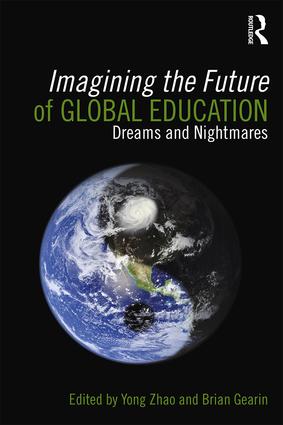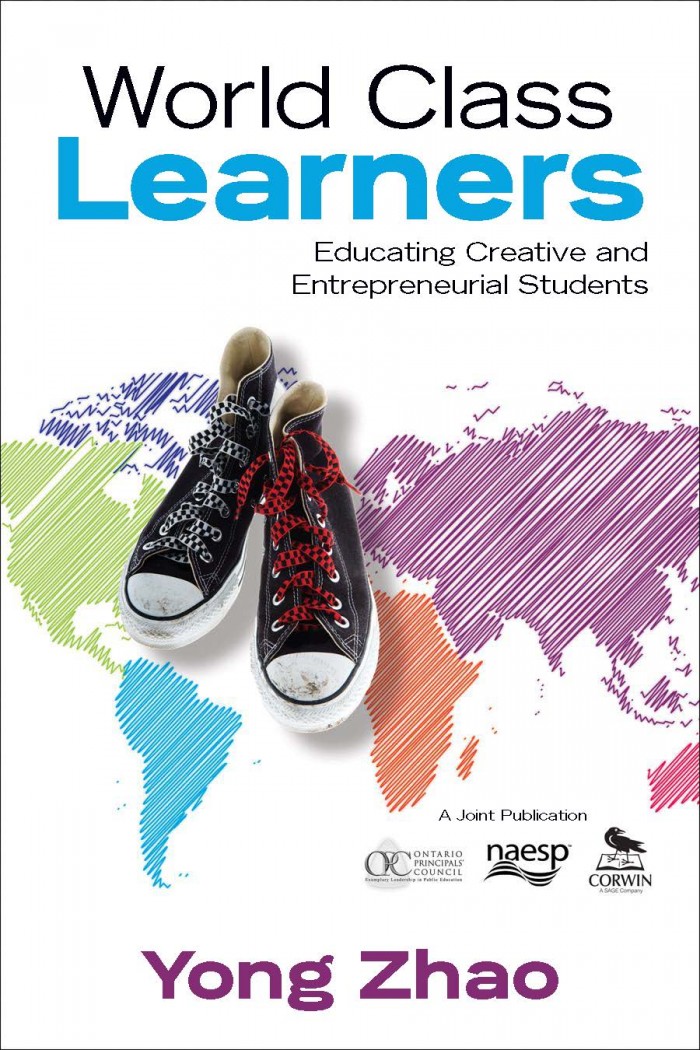Follow the Money: A High School Student’s Take on Standardized Testing
Betsy, a junior from New Trier high school, interviewed me for a class assignment and sent me her paper. I asked her if I could share it with others on my blog and she gave me the permission. Thanks, Betsy.
“The paper was written for a class called American studies (an integrated history and English course). The assignment was to explore and research a why question – my question was: why has the government tripled state spending on standardized tests? (the answer was my paper),” Betsy provided the background in an email.
Follow the Money
In the last decade “annual state spending on standardized tests rose from $423 million…to almost $1.1. billion” according to Pew Center on the States, a national research organization on public policies. To understand this spike, one must “follow the money” to the roots of standardized testing (David Shaafsma). The origins begin when the Soviet Union launched Sputnik in 1957, the first event “to concern national education to national defense” (Yong Zhao). A “concern” furthered in the 1980s by Reagan administration’s A Nation at Risk, the stirring report that declared America is at risk because of the low standards in education. The answer arrived after the political rallying cry, “ ‘we are going to raise standards’ ”combined with the private sector’s strategies to improve education (Thomas Newkirk). The outgrowth: standardized tests. A solution not fully realized until George Bush passed The No Child Left Behind Act (NCLB) in 2001, an act that mandated annual state testing and set strict standards—later heightened by Obama’s Race to the Top program. So, why has the government tripled state spending on standardized tests? Because standardized tests are a perceived solution to the fear of falling behind other countries, testing gives politicians an expediency and recent legislation, such as NCLB and Race to the Top, have elevated their importance.
The fear of falling behind other countries established the problem standardized testing proposed to solve. Standardized testing derives from the, “chain of reasoning that goes like the following: American education is in crisis” (Yong Zhao). The Soviet Union’s launch of Sputnik began the “chain” of crises that guided the need for standardized tests. Sputnik “galvanized the nation to take quick action by using crisis language” (“A nation at risk”). The government’s strategic use of “crisis language” succeeded on a larger scale after A Nation at Risk made the chilling claim: “Our nation is at risk. Our once unchallenged preeminence…is being overtaken by competitors throughout the world.” The fiery “crisis language” of “risk” and “overtaken” became heightened by the media, as “featured stories about ‘crisis in education” swept the nation (Ravitch 24) and launched, “the push for more rigor and standards” (Harrison). By magnifying the American fear of falling behind other countries, the media’s exaggeration of the government’s “crisis language” energized the “push” to raise standards in education.
The media’s power to amplify the fear of falling behind other countries helped generate urgency for a solution to education. The media, “compelled American politicians and the public to believe the nation is in trouble” by spinning the strategic “crisis language” of politicians into practiced, “the nation is in trouble” phrases (Yong Zhao). An example is “failing schools,” a trigger used “544 times in news articles in just one month” this year (Farhi). The media then uses such “failing school” triggers to spread the phenomenon: “since Japan does so well on standardized tests we need to do better” (David Shaafsma). An action alluded to in Don Delillo’s White Noise, when a man asks in frustration, “Isn’t fear news?” (155). Because the “fear news” stirred a “need to do something radical” (Thomas Newkirk), the media constructed, “a context for people to accept standardized testing” as the “radical” solution (Yong Zhao). The paranoia fostered by the media’s portrayal of the fear of falling behind other countries strengthened the case for standardized testing.
The media helped advanced the need for standardized testing by exasperating the fear of falling behind other countries. The primary arguments to increase standardized testing builds upon America’s “place in world rankings” (Michael Smith) because the word, “place” encourages fear, “To say you are losing out, that you are worse than others.” (Yong Zhao). Arguments for standardized testing plays to the fear of “losing out” to convince Americans, “education is in crisis” and “standards are the way to address” the fear of falling behind. (Michael Smith). Standardized testing then became the solution to the fear of falling behind other countries after politicians realized the benefits of involving the private sector’s faith in standards with education.
The standardized testing movement arrived after politicians saw the expediency of combining the private sector with education. The political tool gained steam after the “standards-based reform movement took off in 1983” when Reagan’s A Nation at Risk made clear: “America was at extreme economic risk, largely because of bad schools” (Meir). Because the report planted the belief, “educated people were vital” to compete in the world economy, A Nation at Risk sparked the private sector’s drive to fix “bad schools” with “standards-based reform.” But to fulfill their corporate agenda—better workers—the private sector needed government funding to help, “build the edifice of numbers for schooling” (David Shaafsma). Applying the Stanford-Binet logic of Lewis Truman, “intelligence…could be defined and accurately measured” (42) the private sector argued their business model made, “it possible to quantify every aspect of learning” (David Shaafsma). The thought to “quantify” education sold politicians, who craved any “magic bullet for performance” (Thomas Newkirk). As politicians financed the “magic bullet” agenda and promoted “the magical power” of “quantification, standardization and the measuring of minds” (Sacks 25), they helped bridge the gap between the private sector and education. To enforce the “magic bullet” agenda, the private sector then empowered politicians to replace schools administrators with business leaders and new “corporate-sounding titles” (Ravitch 76). Former budget director Paul Vallas became the CEO of Chicago Public Schools (CPS), with the goal to prepare, “children for the economy of the future” (Coeyman)—an objective carried on by the following CPS CEO and current Secretary of Education, Arne Duncan. Because business leaders helped politicians, “stay the course on standard-based reform,” their “course” led politicians to the expedient solution: standardized tests (Traiman 226).
Standardized tests became the expedient outgrowth of the private sector’s standard-based reforms. A culmination of the, “power of accountability, incentives and markets” (Ravitch) the “ ‘test heavy’ model of education reform represents the growth of corporate influence” on politicians (Gluckman 32). Politicians embraced the private sector’s “test-heavy model,” since the structure provided a cheap, “simple way to standardize” and “hold teachers and students accountable” (Yong Zhao). The standardized testing movement then gained momentum, as politicians wove the accountable nature of testing into a compelling, two-fold solution: standardized testing would “enable the United States to compete in world commerce” (Tucker 2318) and shine a “spotlight on low-performing schools” (Ravitch 3). The idea standardized testing could “spotlight” the socio-economic gaps in education lead to the No Child Left Behind Act (NCLB)—the first law to mandate annual state-testing and publication of results. Because the “spotlight” beamed a “harsh, new light” on education, the private sector’s “push for” standardized testing that had, “been building for about two decades” exploded after NCLB (Nagourney).
Standardized testing began to control education after NCLB and Race to the Top were initiated. Because NCLB “went far beyond any previous involvement” with the private sector, NCLB transformed education “into an accounting strategy: Measure, then punish or reward” (Ravitch 16). NCLB modeled an “accounting strategy” by setting the strict goal: all students must reach 100% proficiency by 2014 and prove “adequate yearly progress,” or schools districts would risk the “failing” label and an escalating timeline of sanctions—school is defunded, then “restructured, replaced or shut down” (NPR). Thus began the standardized testing frenzy and state spending, as the dangers of “failing” caused test spending to increase from $423 million in 2001 to $1.1 billion (Pew Center on the States). A spike destined to grow with Race to the Top, Obama’s recent “power of the purse” (Kohn) initiative to grant “$4.35 billion to states that have embraced [NCLB] reforms” (Banchero). The spending spurred by NCLB and Race to the Top affected education beyond the dollars.
The pressure generated by the price of NCLB and Race to the Top caused standardized tests to reshape education. Although Bush’s presidency ended, his statement: “we expect every child to learn, and you must show us whether or not every child is learning” lived on, as the mandate to “show us” scores continued to cause, “additional spending for states and districts, many already low on cash” (Banchero). The more “additional money” spent, the more pressure “states and districts” put on schools to win “the standardized-testing game” (Sacks 28). The “game” then created a conflict of interest, as the high-stakes motivated schools officials “to save themselves, at the expense” of their teachers and students (Nagourney). Because the “atmosphere of constant stress and fear” (Kopkowski) turned teachers away, schools had to standardize the curriculum by “centering on the testable subjects, mathematics and English” (Chrisanthy Stotis)—at the cost of history, science and the arts. As creativity expert Ken Robinson stated in a recent TED talk, high school dropouts occur not because of, “the tests themselves, but the educational culture they promote”—teaching to the test. Because NCLB and Race to the Top constructed a hostile “educational culture” dependent on standardized testing, many Americans have come to the radical conclusion: the government is trying to privatize education.
Although many Americans consider privatization of education to be a main cause of today’s test-happy culture, the reason is not valid because the connotations of the word “privatization” are too broad. Because similar to how “death tax” is a vernacular for estate tax, privatization serves as “a buzz word in education circles” and blankets “a broad range” of criticisms (Burth). The “buzz word” then serves the sinister belief: privatization is “the hidden political agenda behind NCLB” (Ambrosio) to purposely limit education and spend less of America’s “massive trillion dollar debt” on public schools (David Shaafsma). In the context of NCLB and standardized tests, the true meaning is more refined than the “political agenda” definition used by the Educational Management Organization (EMO) and the press, who use the buzzword to judge “all aspects of schools” (Burth). Instead, “educational privatization” represents how “Schools and local governments now spend approximately $48 billion per year” on standardized tests and test-prep materials from the private sector (Burth). Ultimately, “educational privatization” contributes “a small privatization” to “the bigger part of schooling:” the standardized testing mania (Yong Zhao).
Standardized testing has created a vicious circle of testing and spending. To break the cycle, America must follow the advice of former Assistant Secretary of Education, Diane Ravitch: “We as a society cannot extricate ourselves from fads and nostrums unless we carefully look at how we got entangled in them” (13). Before society tries to solve the myriad of “fads and nostrums” of standardized testing, America needs explorers; inquirers, who are willing to comb through the “entanglements” of history and discover the rooted causes—the why—of the current surge in standardized test spending. Although the answer begins with fear, it ends with the fact standardized tests offer an easy answer to the tougher question, “How do you equalize education?” (Thomas Newkirk). Because, “unless as a society we attack that, then we are not getting at the root causes to the differences in performance” (Thomas Newkirk). Students continue to produce poor results and testing has become the belabored solution to the “differences in performance.” As a result, standardized testing has spawned into a self-perpetuating system of ill spending, as “what doesn’t work is what continues to do more” (Yong Zhao).
Ambrosio, John. “No Child Left Behind: The Case of Roosevelt High School.” Phi Delta Kappan 85.9 (2004): 709-712. ProQuest 5000. Web. 12 Apr. 2012.
Banchero, Stephanie. “U.S. News: Teacher Evaluations Pose Test for States.” Wall Street Journal [New York] 8 Mar. 2012, sec. A2: n. pag. ProQuest 5000. Web. 2 Apr. 2012.
Burth, Patricia, Joseph Donovan, and Mathew Steinberg. “The New Landscape of Educational Privatization in the Era of NCLB:.” Phi Delta Kappan 88.2 (2006): 129-135. ProQuest 5000. Web. 1 May 2012.
Coeyman, Marjorie. “A turnaround plan for Philly schools.” The Christian Science Monitor 14 Jan. 2003: n. pag. ProQuest 5000. Web. 1 May 2012.
Delillo, Don. White Noise. New York: Penguin Group, 1985. Print.
Farhi, Paul. “The Failure of ‘Failing Schools.’” Interview by Bob Garfield. On the Media. New York Public Radio, 13 Apr. 2012. Web. 29 Apr. 2012.
– – -. “Flunking the Test.” American Journalism Review Apr.-May 2012: n. pag. ProQuest 5000. Web. 30 Apr. 2012. <http://www.ajr.org/?Article.asp?id=5280>.
Gluckman, Amy. “Testing…Testing…one, two, three: The commercial side of the standardized testing boom.” Dollars & Sense Jan.-Feb. 2002: 32-37. ProQuest 5000. Web. 1 May 2012.
Harrison, David. “The Roanoke Times.” A Nation at Risk Still Has Big Impact 9 Apr. 2008: n. pag. Gale U.S. History in Context. Web. 26 Mar. 2012.
Kohn, Alfie. “Standardized Testing and Its Victims.” Education Week 27 Sept. 2000: 1-5. Alfie Kohn. Web. 22 Mar. 2012. <http://alfiekohn.org>.
Kopkowski, Cynthia. “Why They Leave.” NEA Today 26.7 (2008): 21-25. ProQuest 5000. Web. 22 Mar. 2012.
Meir, Deborah. “Educating a Demoncracy.” The Boston Review Feb.-Mar. 2000: n. pag. Print.
Nagourney, Eric. “Are tests the answer?” New York Times 25 Mar. 2002: 8-11. ProQuest 5000. Web. 22 Mar. 2012.
“’A nation at risk’ spurs two decades of failure. (Education Reform).” USA Today (Society for the Advancement of Education) Aug. 2003: n. pag. Gale U.S. History in Context. Web. 26 Mar. 2012.
Newkirk, Thomas. Personal interview. 10 Apr. 2012.
Ravitch, Diane. The Death and Life of the Great American School System. New York: Basic Books, 2010. Print. D
– – -. “Standardized Testing Undermines Teaching.” Interview by Terry Goss. Fresh Air. National Public Radio. NPR, n.p., 28 Apr. 2011. National Public Radio. Web. Transcript. 30 Apr. 2012.
Robinson, Ken. “Schools Kill Creativity .” TED Talk. June 2006. TED talk. Web. 30 Apr. 2012. <http://.ted.com>.
Sacks, Peter. “Standardized Testing.” Change Mar.-Apr. 1997: 24-31. ProQuest 5000. Web. 29 Apr. 2012.
Shaafsma, David. Personal interview. 13 Apr. 2012.
Smith, Michael. Personal interview. 13 Apr. 2012.
“Standardized Tests .” ProCon.org. N.p., 13 Mar. 2012. Web. 30 Apr. 2012. <http://standardizedtests.procon.org/>.
Stotis, Chrisanthy. Personal interview. 24 Apr. 2012.
Terman, Lewis. The Measurement of Intelligence: An Explanation of and a Complete Guide for the Use of the Stanford Revision and Extension of the Binet-Simon Intelligence. Boston: Houghton Mifflin, 1916. ProQuest 5000. Web. 1 May 2012.
Traiman, Susan. “Business Involvement in Education.” Encyclopedia of Education. Ed. James W. Gunthrie. 2nd ed. Vol. 1. New York: Macmillan Reference , 2003. 226. Print.
Tucker, Marc S. “Standards Movement in American Education.” Encyclopedia of Education. Ed. James W. Guthrie. 2nd ed. Vol. 6. New York: Macmillian Reference USA, 2002. 2318-2323. Gale Virtual Reference Library. Web. 20 Mar. 2012.
United States. A Nation at Risk. By Reagan Adminstration. Washington: GPO, 1983. ERIC PlusText. Web. 30 Apr. 2012.
Zhao, Yong. Personal interview. 12 Apr. 2012.




























“Schools and local governments now spend approximately $48 billion per year” on standardized tests and test-prep materials from the private sector (Burth).”
It has been hard to get accurate figures on how much is spent on testing.
The full quote from Burth et al, in PDK 2006.
“Schools and local governments now spend approximately $48 billion per year to purchase products and services from the private sector. While standardized tests continue to account for a large part of that figure, other products and services demanded under high-stakes accountability reforms have become the fastest-growing segment of the K-12 education market.”
This indicates that it is less than the 48 billion cited in the article. But that was 2006. It might be a lot more now. Just getting every student connected to the internet in order to take the common core tests might cost about 25 billion (my estimate).
High Tech Testing on the Way: a 21st Century Boondoggle?
Stephen Krashen and Susan Ohanian http://blogs.edweek.org/teachers/living-in- dialogue/2011/04/high_tech_testing_on_the_way_a.html
Fine, interesting post, but a little bit misleading to suggest that standardized tests in education somehow sprang from the Sputnik scare. That phony crisis did give birth to a ridiculous panic over US math and science education, a LIFE Magazine cover story that made some poor American teenager look a slacker, particularly compared with some Russian teen they apparently invented.
Keep in mind that serious damage was already being done in this country by abuse and misuse of “intelligence” tests during and immediately following WW I. Terman, Brigham, Yerkes, et al did great wrongs in many arenas and then gave birth to the SATs and all that followed.
[…] on zhaolearning.com Like this:LikeBe the first to like this […]
Thank you, Yong Zhao for encouraging Betsy for sharing her work, and to Betsy for saying yes. The level of synthesis Betsy demonstrated through her writing and extensive citations makes one wonder why so few leaders publicly question the Lumina Foundation’s Degree Qualifications Profile (http://www.luminafoundation.org/publications/The_Degree_Qualifications_Profile.pdf)listing this and other critical thinking abilities as ones to be explicitly taught only at the Bachelor’s level and above. This highly popular attempt at standardizing outcomes inclusive of higher ed cognitive skills being taught is a great example of an outcome from the above-described vicious cycle of testing.
twitter.com/#!/36trusso
That is really an unfortunate but real obstacle to better student evaluation. If there is one school that can prove the success of such assessment, there will be higher chances that more educators may consider making it nation wide.
Feel free to comment:
The views expressed on this site are entirely my own. They do not represent my employer or any other organization/institution. All comments are subject to approval.Archive
03.17.24 Focused: Understanding, Negotiating, and Maximizing Your Influence as a School Leader
02.25.24 What Happened to Global Competence?
08.05.23 Rethinking the time spent at school: Could flexibility improve engagement and performance for students and teachers?
01.17.23 Introduction to Improbable Probabilities: The Unlikely Journey of Yong Zhao
01.05.23 How Not to Kill Creativity?
08.19.22 Preface to Improbable Probabilities: The Unlikely Journey of Yong Zhao
02.05.22 Introduction to New Book: Learning for Uncertainty: Teaching Students How to Thrive in a Rapidly Evolving World
09.25.21 Side effects in education: Taxonomy of educational outcomes
07.13.21 Introduction to My New Book: Learners without Borders
03.09.21 New article: Build back better: Avoid the learning loss trap
02.18.21 New article: The changes we need: Education post COVID-19
09.15.20 Watch Ep4 Creativity in Crisis: How well is creativity understood? A Conversation with Barb Kerr, Haiying Long, Ron Beghetto, & Yong Zhao
08.15.20 Can Creativity be Taught? Ep 3 of Creativity in Crisis on August 28th 3:00-4:00pm Pacific Time
07.13.20 Speak a Different Language: Reimagine the Grammar of Schooling
06.11.20 Assessing Creativity in the Classroom? Recording of Ep2 of Creativity in Crisis
Tag Cloud
Accountability achievement gap CCSSO China/Chinese Commissioner Common Core Standards education Educational Policy Education Reforms national standards New York NGA Singapore standardized testing Standards student performance
WP Cumulus Flash tag cloud by Roy Tanck and Luke Morton requires Flash Player 9 or better.
Silverliningforlearning
Most Commented
Most Viewed
Views expressed on this site are entirely personal. They do not necessarily represent the official positions or views of my employer
Powered by WordPress | Log in | Entries (RSS) | Comments (RSS) | Arthemia theme by Michael Hutagalung